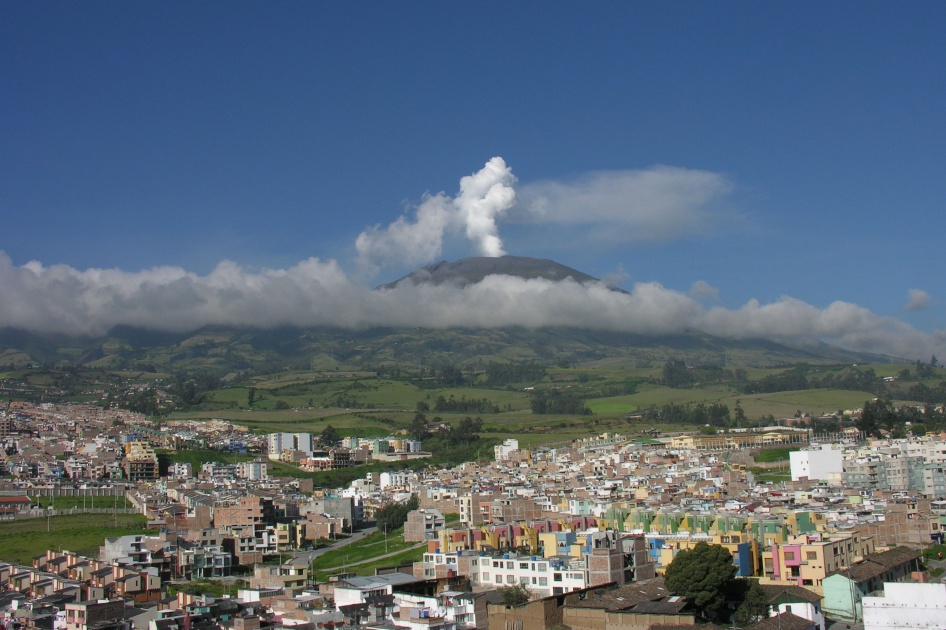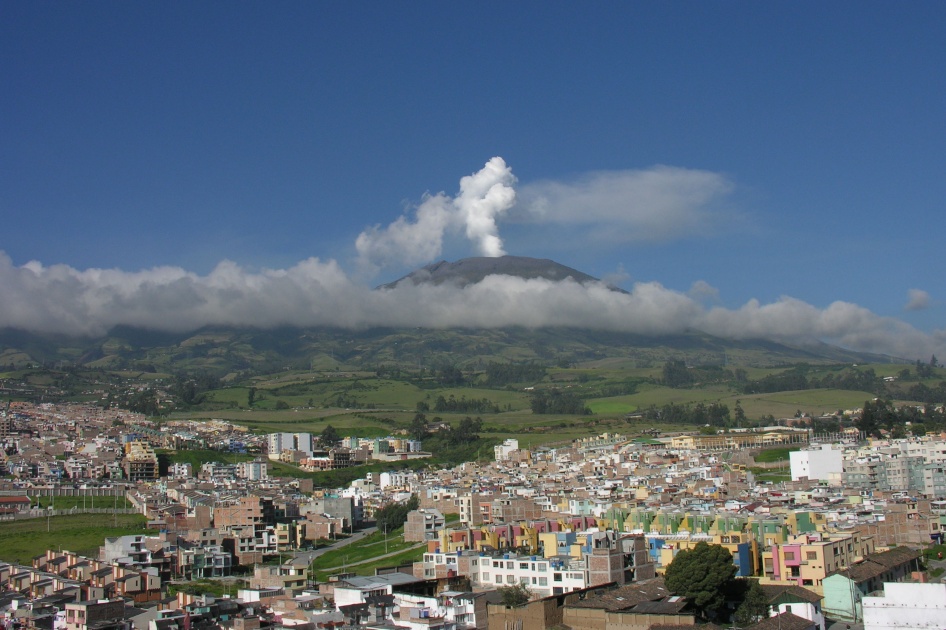Earthquake swarm detected under Galeras volcano, Colombia

Colombian authorities are reporting significantly increased seismic activity under Galeras volcano, one of Colombia's most frequently active volcanos. Increased seismicity was first recorded on May 29 and June 2, 2018. The last eruption of this volcano took place in 2014 (VEI 2).
Earthquakes are located between 1 and 8 km (0.6 – 5 miles) to the northeast of the volcano at depths between 1.2 and 7.5 km (0.7 and 6 miles) from the top of the volcano (4 200 m / 12 800 feet a.s.l.), the Colombian Geological Service (SGC) reported in a special bulletin published 04:35 UTC today.
A total of 310 earthquakes have been reported between 09:35 UTC on June 12 when a M4.5 volcano-tectonic earthquake was recorded and 04:35 UTC today. Other geophysical and geochemical monitoring parameters have no significant changes.
#Reportamos Evento Sísmico – Boletín Actualizado 1, 2018-06-12, 04:35 hora local. Magnitud 4.5, Profundidad superficial, Volcán Galeras #NoticiaEnDesarrollo Más información: https://t.co/0uuw47gI8w pic.twitter.com/aPhyTG6Y7N
— Servicio Geológico (@sgcol) June 12, 2018
Some of the quakes were felt by nearby residents, according to the preliminary reports of the Office of Disaster Risk Management of the Municipality of Pasto.
Two quakes, registered as M4.5 and M4.3, produced several landslides in the municipality of Narino on June 12, affecting homes in the northern parts of the city of San Juan de Pasto. Two people were killed when their house was crushed by falling rocks.
The Alert Level remains at III (Yellow; "changes in the behavior of volcanic activity") since 2011.
SGC urged residents to only heed information from official sources, adding that someone is spreading false information about the activity status of the volcano through social media. This false information is designed to generate panic and confusion in nearby communities, SGC scientists said.

Galeras volcano – 2005, Colombia
Galeras is dominantly andesitic stratovolcano located immediately west of the city of Pasto. It has been active for more than 1 million years.
Major explosive eruptions since the mid-Holocene have produced widespread tephra deposits and pyroclastic flows that swept all but the southern flanks. A central cone slightly lower than the caldera rim has been the site of numerous small-to-moderate historical eruptions since the time of the Spanish conquistadors.
After 10 years of quiescence, Galeras became active again in 1988 and became infamous when its January 4, 1993 eruption killed 6 volcanologists and 3 tourists who were inside the crater when it exploded.
The group was part of a scientific conference excursion and their final decision to enter the crater, pushed forth by team leader Stanley Williams (who miraculously survived), was and still is highly debated.
The fatal decision was made despite the observation of a significantly increased number of particular earthquakes (tornillos), which had preceded previous eruptions and also started to occur in the days before the eruption.
Featured image: Galeras volcano, Colombia in 2005

Commenting rules and guidelines
We value the thoughts and opinions of our readers and welcome healthy discussions on our website. In order to maintain a respectful and positive community, we ask that all commenters follow these rules.